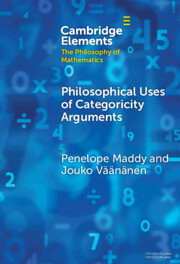Element contents
Philosophical Uses of Categoricity Arguments
Published online by Cambridge University Press: 02 December 2023
Summary
Keywords
- Type
- Element
- Information
- Online ISBN: 9781009432894Publisher: Cambridge University PressPrint publication: 21 December 2023
References
- 11
- Cited by

